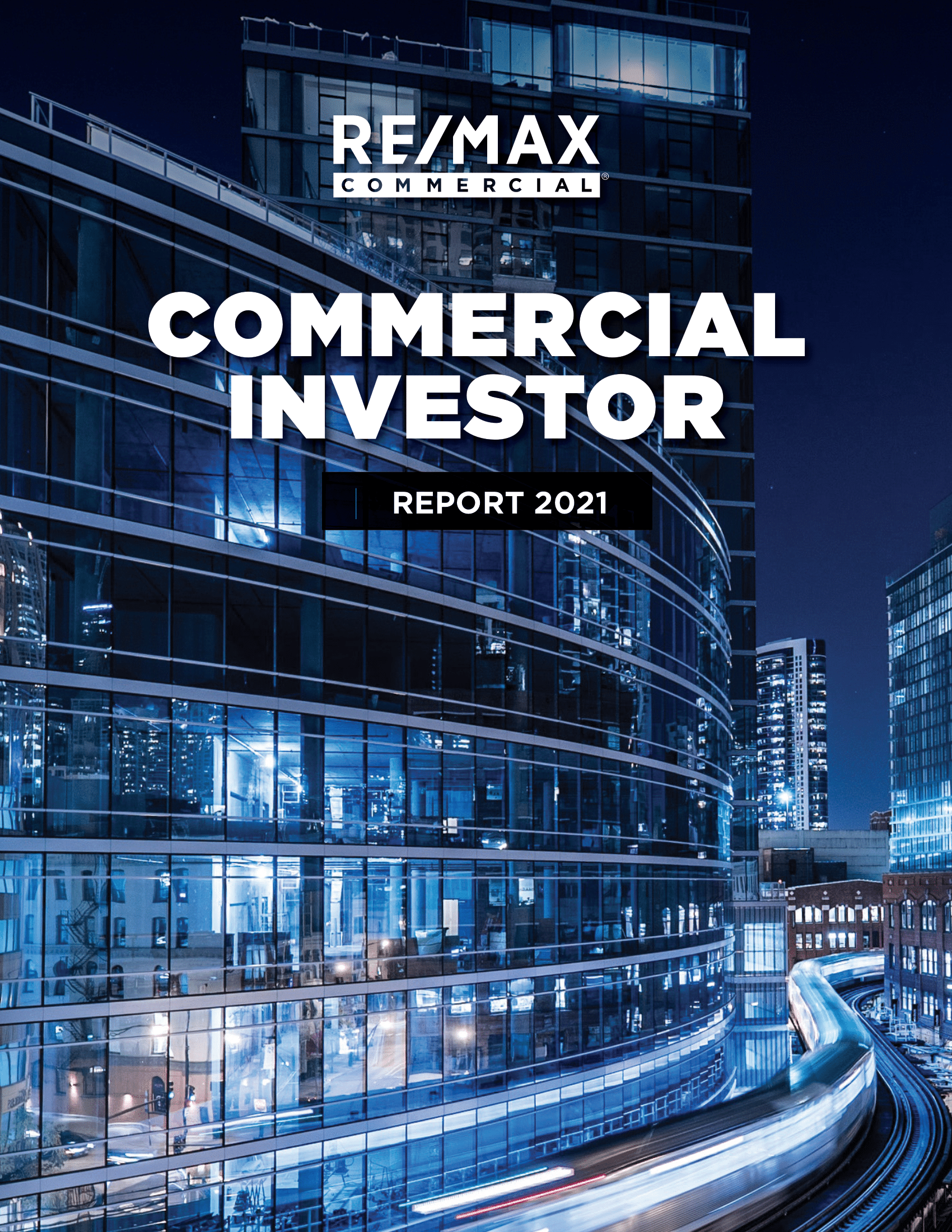EXECUTIVE SUMMARY
The RE/MAX Commercial Real Estate Report, highlighting trends and developments in seven major centres in Western Canada, found that institutional investors and private equity played a substantial role in almost every market in 2020, fuelling demand for multi-unit residential, industrial product, and office buildings while end users and smaller investors were strong in the industrial and, to a lesser extent, retail sectors.
Industrial was the top performer from Vancouver to Winnipeg, driven by increased demand for warehouse and fulfillment space from multi-national companies such as Amazon and FedEx, while demand for multiunit residential remained consistent, with higher CAP rates and lower values attracting investors in markets like Edmonton and Calgary. Farmland rounded out the top three sectors, with robust demand in Saskatchewan sparking strong sales and upward pressure on values.
Closure of bricks and mortar during lockdown and the acceleration of e-commerce placed retail tenants behind the proverbial eight ball in 2020. Smaller retailers used the opportunity to invest in their future by purchasing smaller storefront locations, especially in high-traffic areas – with equity gains buffering any downturn in sales. Others looked to upgrade their online presence and augment with a reduced physical footprint, and if need be, industrial space for warehousing and distribution.
While restaurants were hard hit by the pandemic, drive through locations emerged as 2020’s perfect business model — no touch, no contact, just tap and go. Demand for this product has surged in Saskatoon, Kelowna, and Calgary, and is expected to continue to experience strong
demand in the year ahead.
Limited inventory, shortage of available zoned land, and strong demand overall have made industrial real estate the cash cow of 2020. Vacancies remain low for industrial product, with Vancouver posting the tightest rate at under 1.5 per cent, and rental rates climbing 10 per cent year-over-year. Large multinational companies have been behind the push as they gear up efforts to support a rapidly expanding e-commerce industry. Smaller investors have also been active, as the appetite for income properties in industrial areas that serve strong supply chains and essential services increases in strength. Diversification of smaller portfolios is underway as investors choose to supplement their residential multi-unit residential holdings with industrial product, and to a lesser extent, office/retail.
EDMONTON
After posting $1 billion in regional sales volume in the first quarter of 2020, the Greater Edmonton Area was off to one of the strongest starts in recent years for commercial real estate when the pandemic hit. Second quarter sales plummeted, and despite encouraging upward momentum in the third and fourth quarters, the market finished the year with $2.2 billion in sales, down approximately 33 percent from 2019 levels ($3.3 billion).
Private equity was most active in the commercial market, driving approximately 53 percent of top ten sales across five asset classes in 2020, followed by end users at 37 percent. While most investors were local/regional, approximately 40 percent of sales were from out-of-province, led by British Columbia and Ontario. The highest priced sales occurring in the multi-family and retail sectors involved institutional investors based in Ontario, while the most expensive office sale involved private investors from British Columbia. The aforementioned sales were valued at $305 million, $205 million and $100 million, respectively.
Multi-family residential was quite strong out of the gate in 2020. Overall sales volumes rose year-over-year, with larger deals completed in the first quarter of 2020. Highrise sales were nearly five times higher in 2020 than the prior year, but again, the bulk were completed in the first quarter and pre-pandemic. This, while both walk-up and townhouse segments saw a decline in sales volume. Some of these deals have been pushed into 2021, which should bode well for sales in the year ahead.
Special purpose sales also posted strong gains in 2020 ($233 million), with over half of sales/transactions from either assisted-living centres (the bulk of which occurred in Q1 2020) or automotive dealerships. Automotive dealerships also helped to propel 2020 special purpose sales, with a pandemic-driven consolidation worth over $50 million in sales.
Although industrial real estate is traditionally a perennial favourite with commercial investors in the Greater Edmonton Area, multi-bay sales were down by nearly 80 per cent and single-tenant sales decreased by 65 per cent. Owner/users were the one bright spot in this asset class, with sales volumes holding relatively steady in 2020, compared to 2019. There has been an upswing in demand for new warehousing and distribution centres, in large part due to surging e-commerce sales. Two Amazon centres totalling 1.1 million sq. ft. recently opened in Leduc County, while another 1.2 million sq. ft. is currently under construction in Acheson. This rising trend in e-commerce is expected to spark increased levels of purpose-built rentals and build-to-suit projects.
While retail property sales were down overall in 2020, retail condominiums showed a slight uptick in sales volume ($45.4 million versus $44.7 million) with 18 more transactions in 2020, compared to the previous year. The increase highlights a growing trend of owner
acquisitions, while shopping centre and general retail sales were down 30 per cent and 25 per cent respectively. It is very important to note that retail spending in Alberta has surpassed pre-COVID levels on a monthly basis since the summer of 2020 at over $7.1B (as last reported Nov. 2020).
Office sales were down across the board in Edmonton, with both suburban and condo sales decreasing by 20 per cent and 50 per cent respectively. Sales volumes in the downtown core dropped 75 per cent. Despite the decline in both sales and volumes, there were no ‘fire
sales’ occurring in the market — even the recent sale of the CN building that created headlines for its $10 purchase price involved the purchasers assuming $64 million in debt.
With 80 percent of office tenancy currently working from home, investors are closely scrutinizing the sector. Overall vacancy rates were at approximately 18 percent at year-end, with no new significant construction coming on-stream. While most commercial real estate specialists believe that the majority of office occupancy will return to the workplace once vaccines have been distributed across the country, the office landscape may see some changes moving forward, with remote access becoming more prevalent for those work processes that can support it. Businesses will likely be working on contingencies that address the new mix throughout the year, with some potentially embracing a remote/office hybrid.
Economic stability will go a long way in improving consumer confidence and the overall picture for the commercial market in the aftermath of COVID-19. E-commerce is here to stay and will likely play a growing role in the future of retail. Trends toward pick-up and delivery, particularly in the retail sector, will accelerate. The industrial “last mile” will tackle logistical challenges in terms of getting parcels to destinations in high-density areas like the downtown core or alternatively outlying suburban areas. This segment of the market may see high-tech solutions with the introduction of drone deliveries for example.
In terms of new construction, COVID has definitely redefined building requirements. Future apartment developments will likely feature an increasing number of units with balconies and more outdoor space. Single detached home sales will also flourish as consumer demand for greater and greener space will take hold, aided and abetted by historically low interest rates.
Recovering oil prices, bitumen upgrading/processing, and innovative new ways to transport oil should have a positive impact on economic growth moving forward. According to the Provincial Outlook published by RBC Economics in December 2020, real GDP growth in Alberta will climb 4.5 per cent in 2021 and another 4.3 per cent in 2022. Although the report specifically targets concerns over the performance in the provinces commercial real estate sector, an improving economy and rising consumer confidence will play a major role in boosting the overall health of the province.















